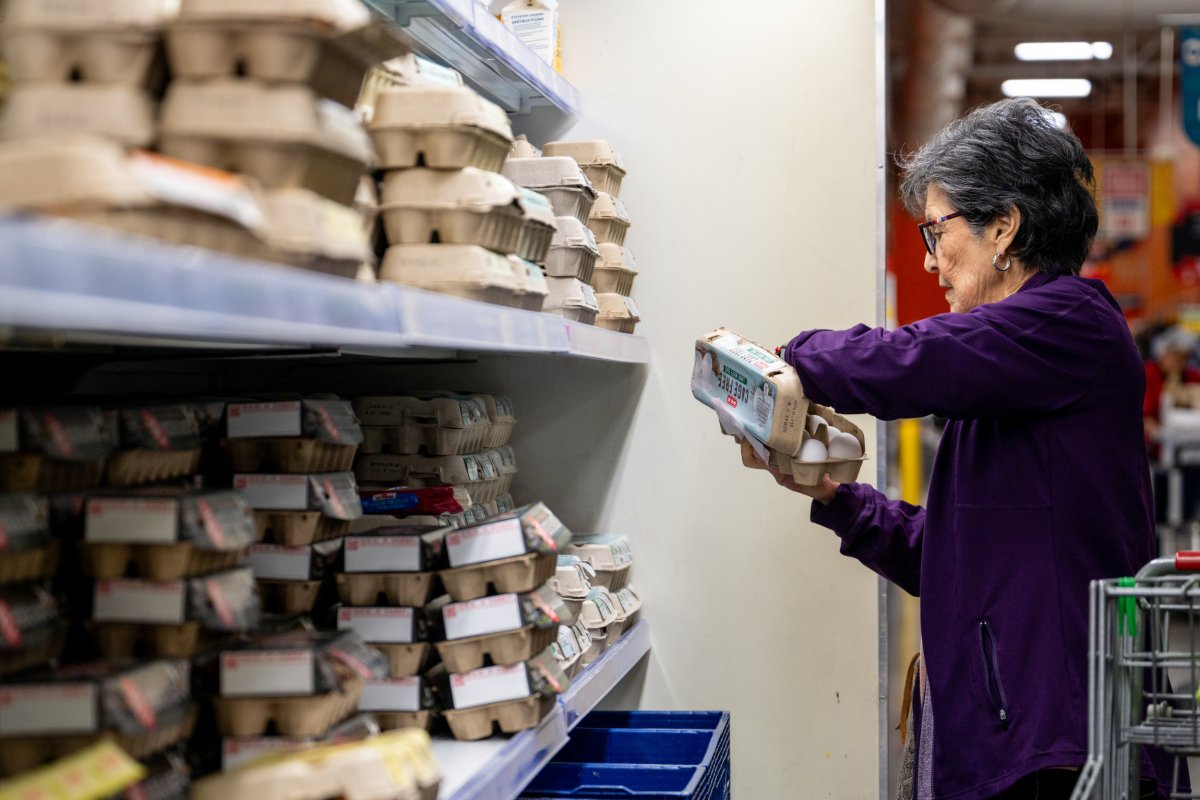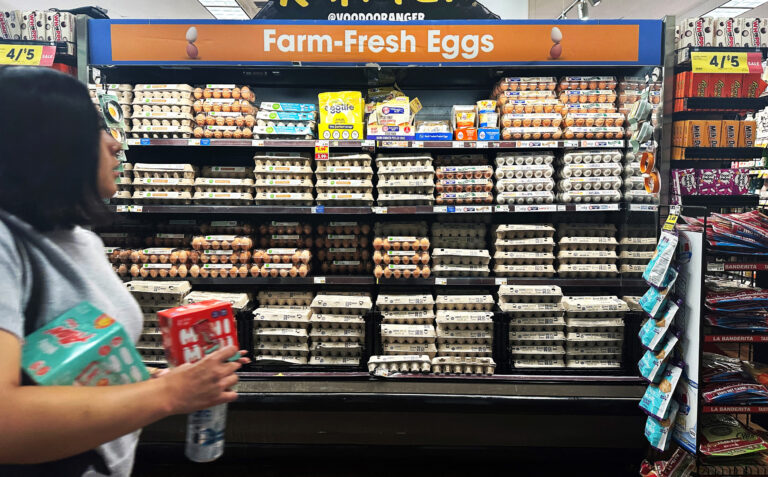Egg prices are plummeting from recent highs, but consumers may have to wait before they see the effects at their local stores.
President Donald Trump has already chalked this up as a significant political victory—telling attendees at the White House’s Iftar Dinner that “the problem with eggs was Joe Biden”—leaving average Americans confused as to when they might profit from the end of the months-long egg cost crisis.
“Wholesale egg prices, they continue to fall. A dozen eggs are now $3.10 cheaper since January 24. That’s a 47 percent decrease overall,” White House Press Secretary Karoline Leavitt told reporters on March 17. “So I think the American people do have great reason to be optimistic about this economy.”
The Conference Board’s latest Consumer Confidence Index, which revealed that short-term anxiety about future economic conditions had risen to a 12-year high, highlighted eggs as a key price concern for consumers, along with the potential impact of Trump’s tariff agenda.
Egg prices therefore remain a key touchstone for consumers gauging the impact of persistent inflation as well as the administration’s ability to address it, meaning Trump’s triumphant statements could fall on deaf ears if reported declines fail to translate into lower prices on store shelves.

Frederic J. Brown/AFP via Getty Images
Egg Prices: Retail vs. Wholesale
According to the U.S. Department of Agriculture (USDA), the cost of graded, loose white large-shell eggs in truckload quantities has fallen to $3.27 per dozen. Trading Economics, which tracks daily price changes, found that the price of a dozen eggs had fallen to less than $3 for the first time since October, down from an historic high of $8.17 only weeks ago.
But the price tags at America’s largest grocers appear to be telling a different story.
Kroger is currently selling a dozen Grade A large white eggs for $7.39, while Walmart offers cage-free variants at $7.12, or about 59 cents per egg. Other regional grocers are also showing a similar disparity between wholesale and in-store costs.
Where Is The Difference Coming From?
“There are a couple of issues at play here,” Darren Hudson, professor of agricultural and applied economics at Texas Tech University, told Newsweek.
“First, prices are often localized,” Hudson said. “For example, I was just at the store and white, Grade A eggs were $4.39 in Lubbock, Texas. It may depend on proximity to egg production, local demand, etc. Cage free were around $5.50 per dozen. Free range/organic were around $7.50 a dozen.”
Hudson added that retail prices are a reflection of wholesale prices at the time of purchase, potentially when they were still rattled by the effects of one of the worst avian flu outbreaks in U.S. history.
“If stores had been contracting at higher wholesale prices for later delivery, that inventory has to be moved out before the newer wholesale prices feed to the retail level,” he said. “Stores with lower volume may be a bit slower to lower prices because it takes a bit longer to move the previously purchased eggs out the door.”
Joseph Balagtas, professor of agricultural economics at Purdue University, similarly told Newsweek that retail prices are likely lagging behind wholesale because of contracting and inventory “as retailers are pricing eggs in the store based on contracts that were in effect a few weeks ago.

Brandon Bell/Getty Images
While there have been suggestions from lawmakers and farmer advocacy organizations that producers and retailers might be capitalizing on the avian flu to artificially inflate in-store costs, both experts dismissed any major effects of price-gouging.
“Grocery retailers are concentrated, and the egg industry to a lesser extent is also concentrated, so it’s important to be vigilant for anticompetitive behavior,” Balagtas said. “But I think the main driver of the dramatic swings we’ve seen in egg prices over the past few years is not market power or greed but avian flu.”
“Unless you are dealing with a localized monopoly [effective anyway] of a single company, ‘gouging’ is probably not at play,” Hudson said. “Basic staple commodity prices are pretty competitive and with high frequency of purchase by households, they are quick to spot price differentials.”
When Can Consumers Expect Prices To Drop?
“Consumers are slowly beginning to see downward price adjustments and increasing availability in the dairy case and just in time as the market is on the cusp of the Easter and Passover demand season,” the USDA said in its most recent egg market report on Friday.
However, with a recovery in production coinciding with seasonally high demand, it warned that consumers may have to wait for price declines to be reflected on store shelves.
The Trump administration also appears to be pulling out all the stops to ensure that supply can match the Easter demand, with Agriculture Secretary Brooke Rollins announcing that the U.S. will import “hundreds of millions of eggs” from Turkey and South Korea as a temporary price-easing measure.
“Barring another surge in avian flu, I’d expect to see retail prices fall just as wholesale prices have fallen through the month of March,” Balagtas told Newsweek. “HPAI confirmed detections were down in March compared to previous months. So the lower wholesale prices are reflecting a recovery in egg production.”
He added that retail prices “typically lag wholesale prices by two to three weeks,” meaning Americans can expect to see costs continue to decrease as the effects of restored production levels make their way through the supply chain.


